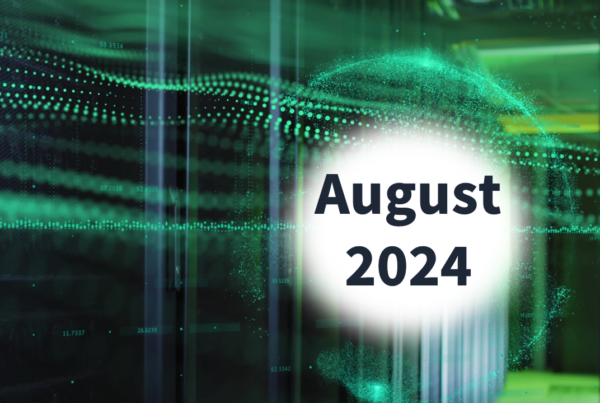
Arizona-based Salt River Project (SRP) is one of the oldest municipal utilities in the United States, but the water and electricity service provider takes anything but an antiquated approach to customer data and analytics.
From early efforts by the SRP Marketing team to begin collecting historical customer information in 2007 to facilitate initiatives such as product development and forecasting, the utility has spread its customer analytics focus across the organization through a hub-and-spoke model. Analytic Competency Centers have been set up to help groups such as Customer Operations, Market Insights, Pricing, Load Research, and Distribution Strategy use data to better serve customers.

A centralized Analytics Center of Excellence manages the analytics infrastructure and business intelligence tools. Today, SRP uses an advanced set of data-driven tools, such as SQL Server Management Studio, SQL Server Integration Services, and data lakes for data engineering; Power BI, Adobe Analytics, and SQL tools for data visualization; and SAS, Python, Pi, R, Power BI, and Qualtrics, among others, for data science capabilities.
In total, more than 100 employees have analytics-related responsibilities across the organization, including around 20 who perform predictive customer analysis, 15 who are dedicated to customer research and analytics, and four who work on SRP’s Customer Operations Data, Analytics, and Automation team.
For organizations at the beginning of a customer analytics journey, the myriad tools and organizational structures that comprise SRP’s analytics capabilities may look overwhelming. However, SRP’s work building these capabilities is proof a lot can be accomplished in relatively little time. For example, the utility’s Customer Operations group first identified the need for an Analytics Competency Center in 2020, and the centers have grown and matured rapidly since the first one launched in 2021. The 100-plus analytics employees numbered only a few at the beginning of SRP’s customer analytics journey.
Higher Customer Satisfaction and Better Overall Customer Experience
Director of Market Insights and Analytics Cathy den Dulk said SRP’s growing customer analytics orientation has led to insights that benefit customers and improve the performance of groups across the utility. Within the Customer Operations group, data analysis has led to shorter customer wait times in the SRP contact center, more informed decision-making by group leadership, and improved customer satisfaction and customer experience metrics.
Leaders and stakeholders are the ones most excited by the growth and maturity. The insights being provided help them make more confident and informed decisions to benefit our customers and the community we serve. -Elise Gould, SRP Senior Director of Customer Insights, Brand Strategy and Marketing
On the marketing side, analytics are driving improved customer experience through the creation of customer journeys, which enable the Marketing team to identify friction points and fix the problems. Data analysis has also improved the marketing effectiveness of energy efficiency and other customer programs. “Leaders and stakeholders are the ones most excited by the growth and maturity,” Elise Gould, SRP Senior Director of Customer Insights, Brand Strategy and Marketing said. “The insights being provided help them make more confident and informed decisions to benefit our customers and the community we serve.” As just one example, den Dulk said data analysis from the Marketing team informs policy decisions and allows leaders to support or refute perceptions about the experience of SRP customers.
What is Next on SRP’s Customer Analytics Journey?
While SRP may be ahead of many utilities, the data analytics space moves quickly. Standing still means falling behind, so SRP remains focused on pushing ahead in areas such as machine learning-based process automation. One challenge in the machine learning and artificial intelligence space, den Dulk said, is some hesitation by employees to embrace the tools. “Early indications are that employees are a bit reluctant to volunteer use cases until they see and understand the benefits machine learning provides to them and their teams,” she said. “Once they understand they can benefit, that their jobs might change but won’t be eliminated, they are more eager to collaborate.” On the marketing side, den Dulk notes that employees are eager to embrace AI and algorithms for new needs that are currently unmet, but there is more resistance to adopting them for existing work.
A second customer analytics-focused priority for SRP in 2024 is to continue to grow and enhance the skills of analytics-focused teams. Beyond the two high-level priorities to grow the employee talent base and unlock the power of machine learning, den Dulk said SRP’s analytics-focused teams will stay busy with projects such as selecting an enterprise data science platform, implementing a standardized enterprise billing system and migrating to a cloud data warehouse.
Lessons Learned on the Journey
Utilities are not known for moving fast, but SRP built a large, sophisticated customer analytics operation in less than 15 years. It is the main proof point to den Dulk’s key lesson: “Just start. Don’t worry about getting your analytics perfect.” At the start of the journey, den Dulk recommends finding someone passionate about data and analysis to lead the charge. A leader with passion will overcome obstacles.
In addition to just starting, it is also wise to start small. Identify a meaningful use case that will prove the value of analytics. If she could change one thing, den Dulk says that SRP would have launched its Analytics Competency Centers much earlier. The decentralized structure empowers team members embedded throughout the organization who know the data, processes, teams, and customers better than a centralized corporate analytics function would.
As organizations advance on their journey, they may discover prioritizing longer lead-time, strategic projects can be challenging, as analytics teams often combat a seemingly never-ending list of reports and requests. “Predictive and prescriptive analytics projects are more complex, require more data, and often involve data science,” den Dulk said. “We are trying to highlight the value of these types of projects with the hopes it will open people’s eyes to what is possible, so they will start asking for this type of work.”
A leader with passion will overcome obstacles.
After 32 years of dedicated service to SRP, Cathy den Dulk has retired, passing the torch to Jim Tiedman, the new Director of Market Insights and Analytics.

Salt River Project is a utility member of Utility Analytics Institute.
Jay Hodgkins specializes in thought-leadership content and content marketing, with clients including Fortune 500 companies, startups, and academic institutions. He has served as editorial director at the University of Virginia Darden School of Business, a lead speechwriter for the CEO of NRG Energy, and a journalist for Gannett newspapers. He is an author of fiction and nonfiction, including co-author of “Athlete Brands: How to Benefit from Your Name, Image & Likeness” (Darden Business Publishing). He is represented by literary manager Eric C. Jones of Tobias Literary Management for TV and film screenwriting. Jay earned a master’s degree in creative writing with distinction from the University of Edinburgh and a bachelor’s degree in commerce from the University of Virginia.















